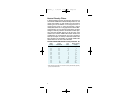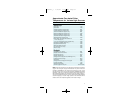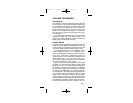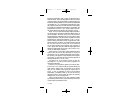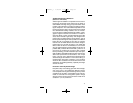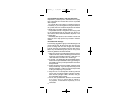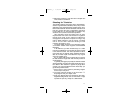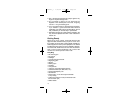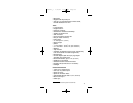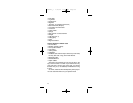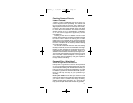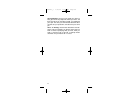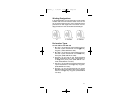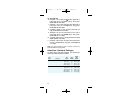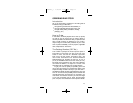18
4. Don’t photograph dark-skinned people against very
bright or very dark backgrounds.
5. Try to maintain a range of 5 to 6 stops from the
brightest to the darkest parts of the shot. A lighting
ratio of 2:1 is a good starting point.
6. If you must shoot white or extremely bright costumes,
try to maintain a good face-to-face white re f e re n c e
relationship. For these scenes, use soft lighting, such as
that produced by an overcast day or open shade.
7. Flat lighting will give very good results for television, but
may not be acceptable if the film is later released for
theater use.
Getting Ready
B e f o re you go out on a shoot, you should check over the
equipment and accessories that you plan to use on loca-
tion. Below are several lists of items judged necessary by
several suppliers of motion picture equipment. The first list
includes items that ought to be in the assistant’s ditty bag.
The second list shows what tools the crew should have.
Next is a list of camera accessories. Last is a list of the
contents of a camera operator’s meter case.
Ditty Bag
• Felt marking pen
• Ear syringe
• Flashlight
• Lens tissue and lens cleaner
• Magnifying glass
• Scissors
• Masking tape
• Tweezers
• Orange sticks
• American Cinematographer Manual
• Assorted 85 filters (85, 85B, 85C, etc.)
• Pencils and ballpoint pens
• Screwdrivers
• Paint brush (a 1-inch size w/tapered bristles
is very handy)
• L e a k p roof precision oil can (the kind that looks
like a fountain pen)
• Rubber bands
033text_c 1/16/02 11:07 AM Page 64



